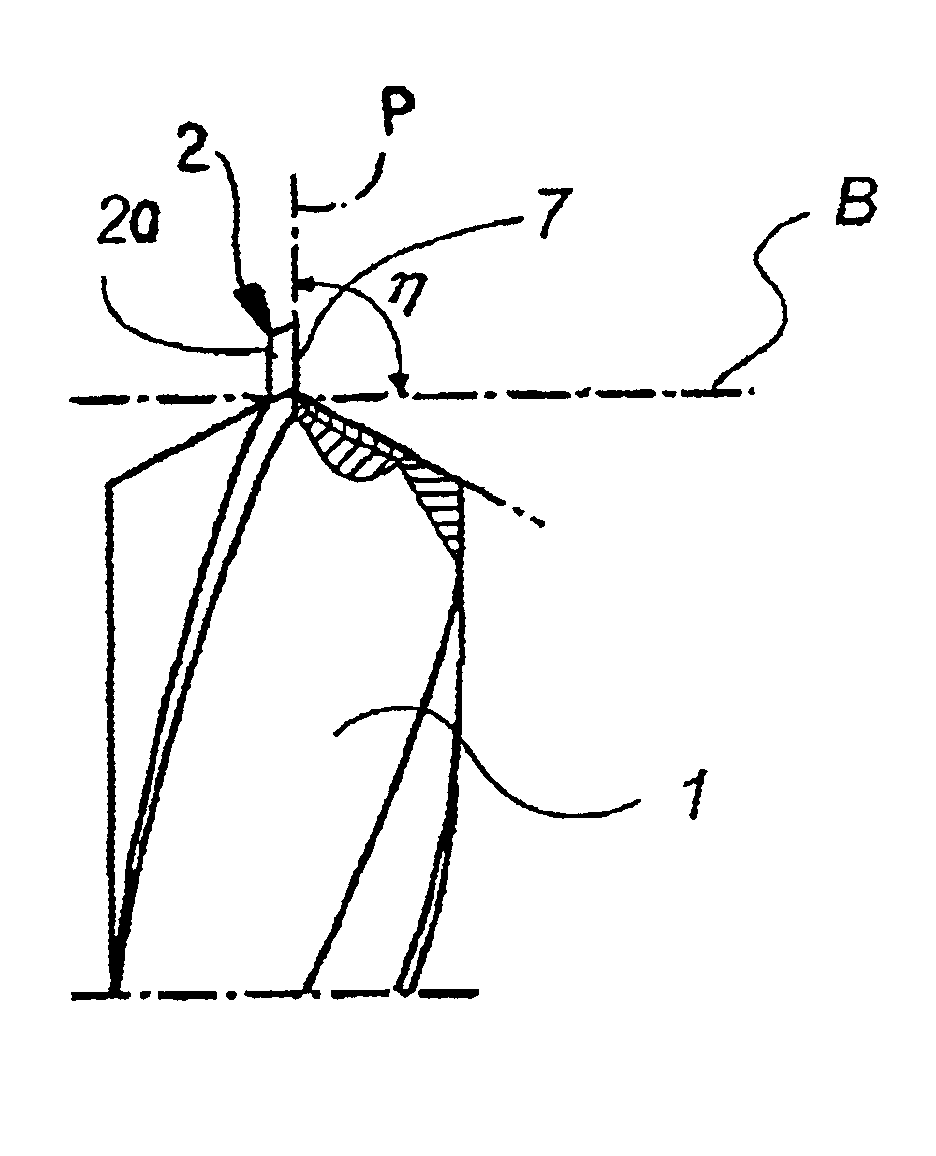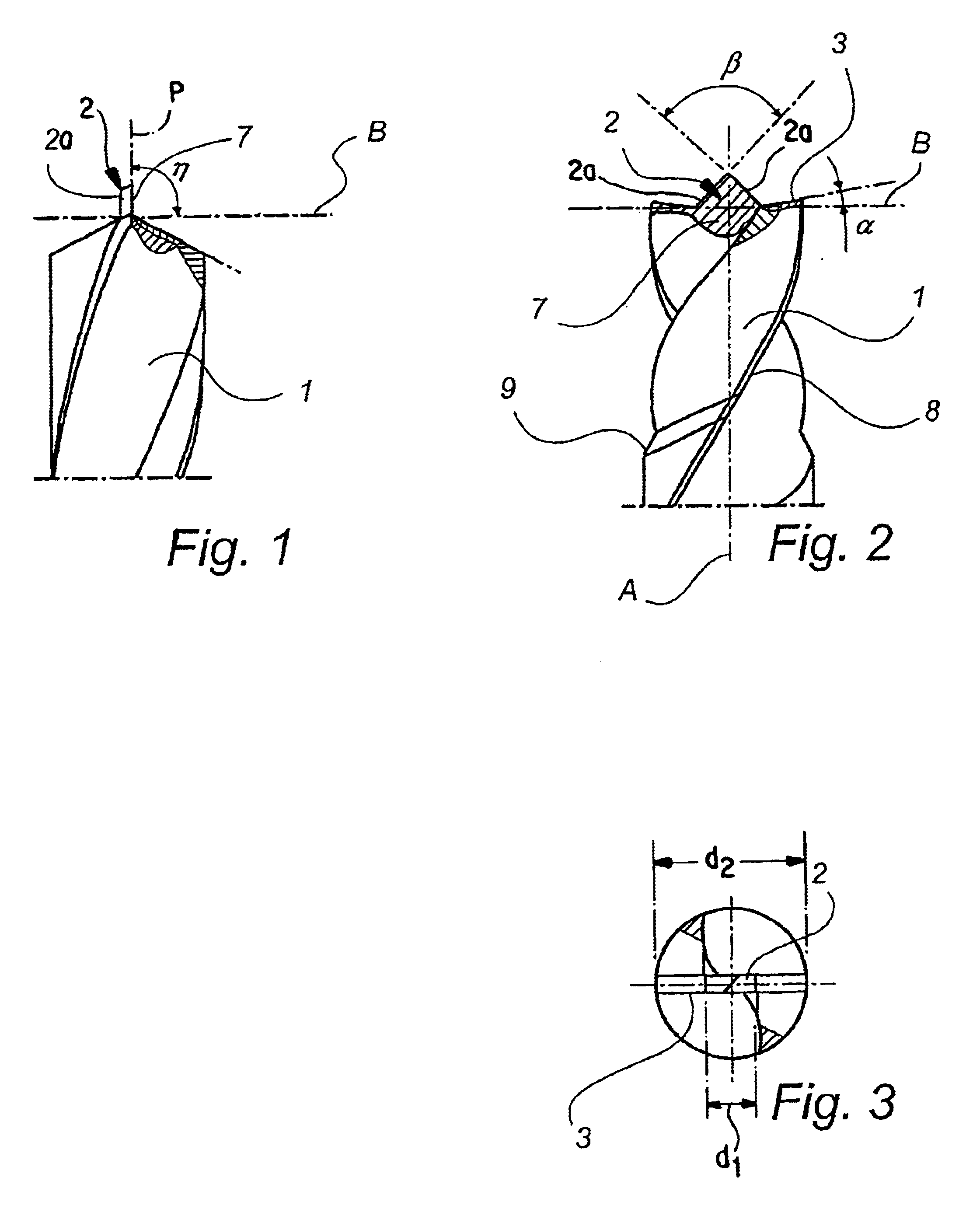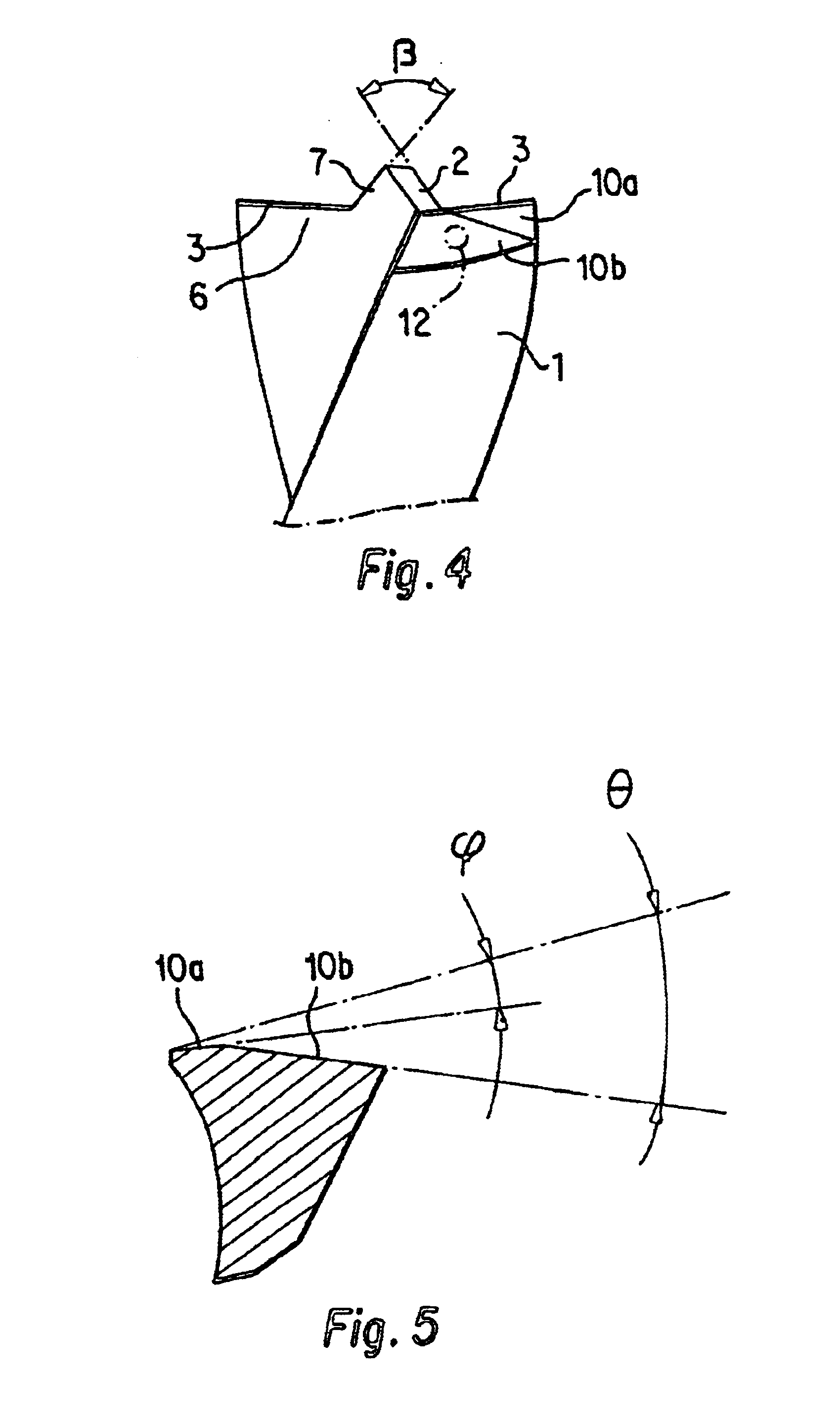Drill bit with pilot point
a pilot point and drill bit technology, applied in the direction of twist drills, manufacturing tools, wood boring tools, etc., can solve the problems of affecting the accuracy of drilling holes, the drill bit is subject to great strain, and the drill bit is often heavily worn, so as to achieve the effect of negative effect on drilling
- Summary
- Abstract
- Description
- Claims
- Application Information
AI Technical Summary
Benefits of technology
Problems solved by technology
Method used
Image
Examples
Embodiment Construction
FIG. 1 is a side view of a drill bit 1 according to a preferred embodiment of the invention. The drill bit 1 is mainly intended for the working of brass, copper and light metals, such as aluminum. Also alloys with light metal are regarded as light metals. The drill bit is advantageously included in a drill made of a piece of hard metal or similar material. The drill is suitably ground in order to achieve its proper form.
In FIG. 1, the center tip 2 is shown from the side having a pilot point angle (η) of essentially 90±2°. The angle (η) is defined as the angle between a reference plane B normal to the axis A of the drill and reference a plane P which contains both a side 7 of the pilot center tip 2 and a respective chip face 6 of the drill (see also FIG. 4).
From FIGS. 4 and 5 is can be seen that the drill includes a clearance surface structure located behind each of two straight cutting edges 3 of the drill (with reference to the direction of the rotation). In the depicted embodiment...
PUM
| Property | Measurement | Unit |
|---|---|---|
| cutting angles | aaaaa | aaaaa |
| tip angle | aaaaa | aaaaa |
| angle | aaaaa | aaaaa |
Abstract
Description
Claims
Application Information
 Login to View More
Login to View More - R&D
- Intellectual Property
- Life Sciences
- Materials
- Tech Scout
- Unparalleled Data Quality
- Higher Quality Content
- 60% Fewer Hallucinations
Browse by: Latest US Patents, China's latest patents, Technical Efficacy Thesaurus, Application Domain, Technology Topic, Popular Technical Reports.
© 2025 PatSnap. All rights reserved.Legal|Privacy policy|Modern Slavery Act Transparency Statement|Sitemap|About US| Contact US: help@patsnap.com



